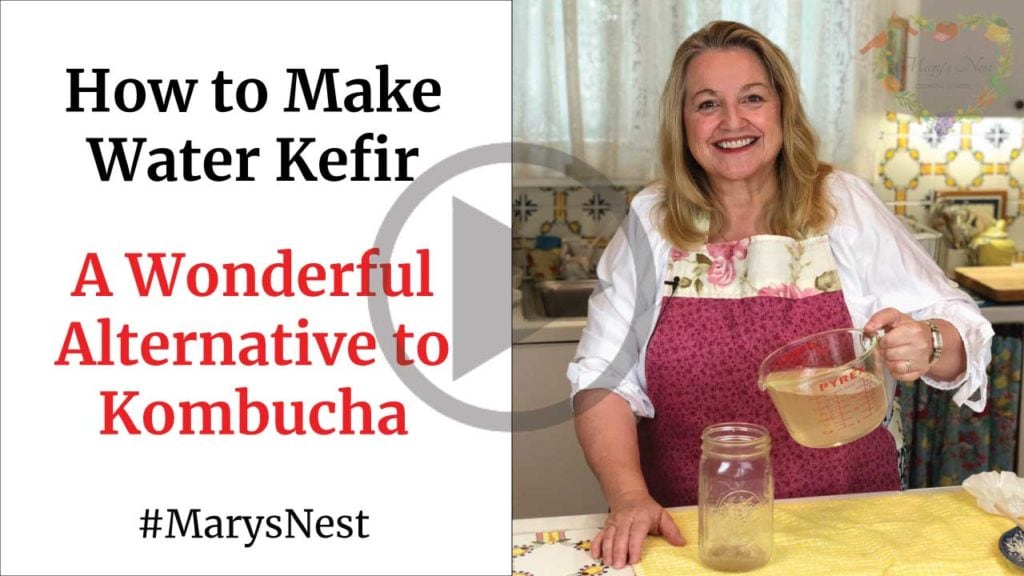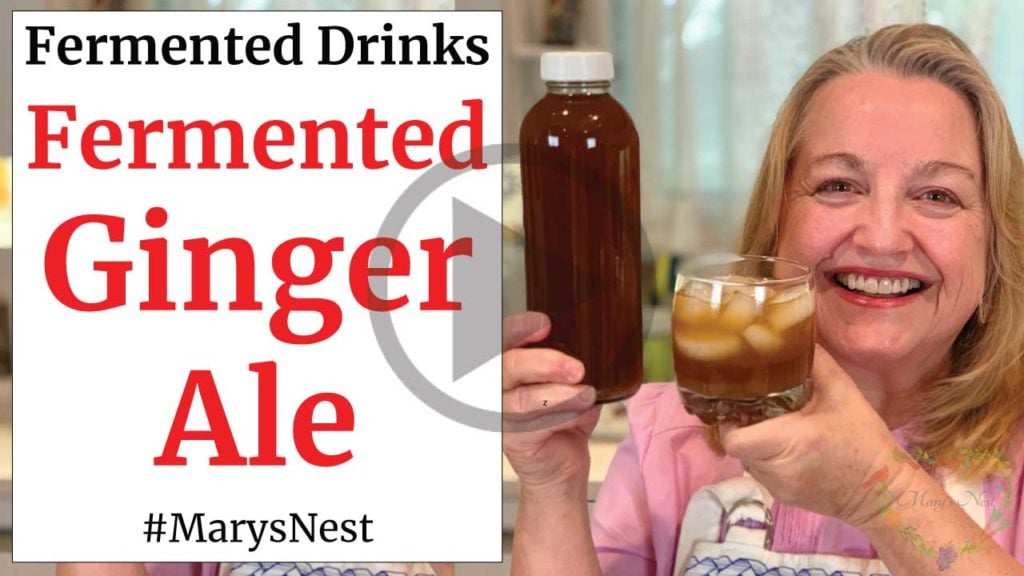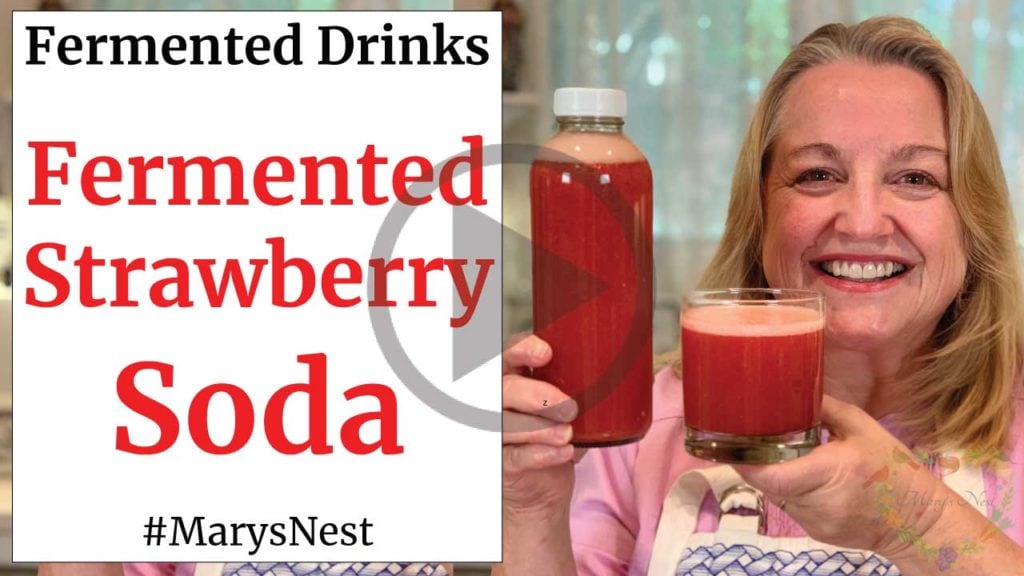Affiliates note: As an Amazon Associate I earn from qualifying purchases. My content may contain affiliate links to products and services. If you click through and make a purchase, I'll receive a small commission. It does not affect the price you pay.
How to Make Traditional Rye Bread Kvass
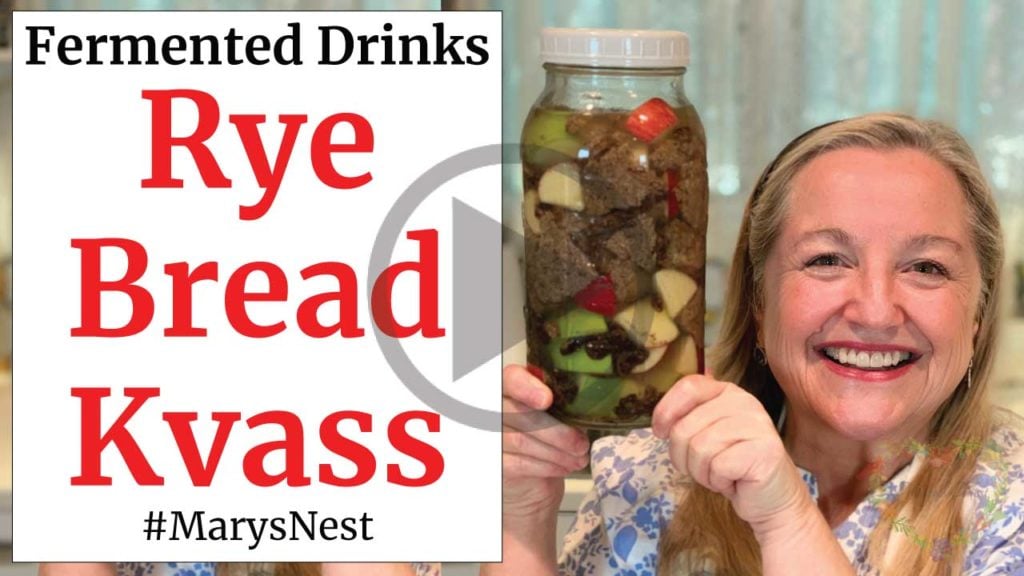
Learn how to make Traditional Rye Bread Kvass for a probiotic-rich drink with beneficial bacteria that is great for good gut health.
Is Kvass Only Made with Beets?
If you’re a long-time viewer, you have probably seen my video where I showed you how to make Beet Kvass. This tasty probiotic-rich drink is made with fresh beets.
Traditional kvass, which originated in Russia and Eastern Europe, is usually made with stale rye bread instead of beets. Were beets added sometimes? Sure. But to be truly authentic, it’s worth making this probiotic-rich drink with rye bread for a beverage that is both sweet, tangy, and effervescent!
Is There Just One Kvass Recipe?
Kvass has been made for thousands of years, and truth be told, there is probably no one “official” recipe. Each country, each region, and even each family probably have their own way of making this unique drink.
I have been experimenting with a Kvass recipe for about two years, and I have discovered a combination that I like. My printable recipe is a simple one. All you need is some stale dark rye bread, a generous handful of raisins, and two apples. That’s it! And of course, some water to top it all off. I show you how to mix all the ingredients together in my recipe video.
Get Started Making Kvass Today
Since you may want a long ferment time, get started making your Kvass today. Your recipe may be ready in 2 days, but you may also want to allow it to ferment—in essence, to “brew”—for a total of 30 days. Each stage in the brewing process creates a slightly different flavored beverage.
Within the first few days, your Kvass will be slightly sweet. After about a week or two, it will be quite effervescent with more of a yeasty flavor that’s similar to Kombucha. And after 30 days…well, all I can say is if you brew it that long it will put hair on your chest! LOL!! After a month of fermentation, it takes on a powerful—almost vinegar-like flavor—similar to Fire Cider.
More Probiotic-Rich Drinks
Now that you have learned how to make real Kvass, try making other probiotic-rich drinks by watching the following videos and recipes.
Stay in Touch with Mary’s Nest
- Subscribe to My YouTube Channel for Traditional Foods Videos (Free) - When you subscribe, be sure to click on the notification bell that will let you know each time I upload a new video.
- Subscribe to Mary’s Traditional Foods Newsletter (Free) - Get a free 36-page eBook for signing up: How to Stock Your Essential Traditional Foods Four-Corners Pantry.
- Join the Traditional Foods Kitchen Academy - For more detailed videos and exclusive members-only perks, join my YouTube membership community.
- Order The Modern Pioneer Cookbook - Get a hardcover book of Mary's nourishing recipes from a Traditional Foods Kitchen. This bestselling cookbook is published by Penguin Random House with their DK imprint.
- Order The Modern Pioneer Pantry - Get Mary's latest hardcover cookbook about preserving food and making delicious meals from your Four Corners Pantry. Mary's second cookbook is also published by Penguin Random House.
I look forward to having you join me in my Texas Hill Country Kitchen!
I’d like to receive more tips and recipes from Mary’s Nest.
Traditional Rye Bread Kvass
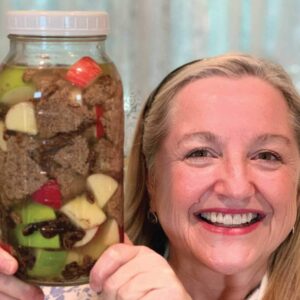
Equipment
- 64-ounce glass jar with screw-on lid
- Swing top bottles (for decanting), optional
Ingredients
- 5 slices Stale or toasted dark rye bread, broken into pieces
- 1/2 cup Dark raisins
- 2 large Apples, unpeeled and chopped into pieces, seeds removed
- Water, preferably chlorine-free
Instructions
- Add all dry ingredients into the jar and shake to mix well. (See video.)
- Fill the jar with water leaving approximately 2 inches of headspace from the rim of the jar.
- Put a lid on the jar and screw it on tight. Shake the jar vigorously.
- Place the jar in a bowl (to catch any spillage), and place it in a warm (room temperature is fine) spot in the kitchen or pantry out of direct sunlight.
- Each day, loosen the lid to allow any built-up carbon dioxide gas to escape.
- Retighten the lid securely and shake the jar. Place the jar back into the bowl, and return the bowl to a warm spot in the kitchen or pantry out of direct sunlight.
- After two days, begin to taste the kvass. You can let the kvass ferment up to 30 days. Once it reaches a flavor that you like, strain out the solids, and decant the liquid into a bottle and refrigerate.
- Kvass will stay fresh in your refrigerator for at least six months. It will lose its "fizz" after a few days unless decanted into a swing-top bottle. Take caution if you decide to decant your kvass into a swing-top bottle. Make sure the bottles are specifically made for decanting effervescent beverages. Even under the best conditions, naturally fermented beverages can cause swing-top bottles to break. I do not recommend using them.
Video
Notes
Shop for items used in this blog post or video
Favorite Fermentation Supplies
- Half Gallon Canning Jars
- 4-Ounce Jelly Jars
- White Storage Lids
- pH Strips
- Masontops Complete Fermentation Kit (See promocode below.)
- Silicone Pickle Pipes
- Fermentation Glass Weights
- Wooden Pickle Packer
- Wooden Kraut Pounder
Use promo code MARYSNST for a one-time 15% off Masontops and Breadsmart products on Amazon.com.
Recommended Reading
Amazon Shop and Shopping Guide
- Visit Mary’s Nest Amazon Shop
- Visit my Shopping Guide page
Get up to 15% off for stocking your Traditional Foods Pantry and equipping your Modern Pioneer Kitchen, including discounts from US Wellness Meats, Farmhouse Teas, Backwoods Home, Masontops, Cultures for Health, Survival Garden Seeds, Redmond Real Salt, Mother Earth News, and More!
Affiliates note: As an Amazon Associate I earn from qualifying purchases. My content may contain affiliate links to products and services. If you click through and make a purchase, I’ll receive a small commission. It does not affect the price you pay.
Disclaimer:I am not a medical doctor, a medical professional, a dietician, or a nutritionist. All content found on the MarysNest.com website, including text, images, videos, eBooks or eGuides, social media, or other formats, were created solely for informational purposes only. The content is not intended to be a substitute for professional medical advice, diagnosis, or treatment. Always seek the advice of your physician or other qualified healthcare provider with any questions you may have regarding a medical condition or proper nutritional advice. Never disregard professional medical advice or delay in seeking it because of something you have watched in a video or read on this website. Use caution when following the recipe in this video. The creator and publisher of this video and website will not be held responsible for any adverse effects that may arise from the use of this recipe and method or any other recipe and method on this website or corresponding video channel.



